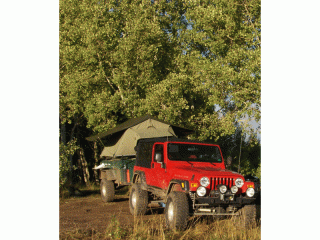I got to use a trailer (albeit not my own) and AT still got a sale. Everyone was happy and there was no additional cost involved to me. This was turning out well. I get to experiment and “learn” off-highway travel with a trailer in tow with someone else’s trailer. What’s the worse that could happen? If I only knew then what I know now!
We ended up scrapping the Grand Teton idea. The initial plans and research were proving to be less appealing for what we wanted to do. In addition, I couldn’t get off work the entire four weeks as I had hoped for. Instead of one single, long vacation time, I had a few days of work that were strategically placed in the schedule so as to stop any real single expedition. My wife and I came up with a “Hub and Spoke” type of plan: use my work days and then be home for replenishing, repacking, repairs, or recovery as needed, and then head out in different directions for different treks.
We live outside of Denver, Colorado, so there’s no shortness of trail choices. Each trip could build on the previous trip’s difficulty, distance, and duration. One of the goals in the planning was to consider places we could go and keep the trailer in-tow as much as possible. That meant finding trails that allowed open camping. With that in mind, we chose trails in Steamboat Springs, Colorado, Ouray/Silverton/Telluride, Colorado, and then finally Moab, Utah.
After getting the loaner trailer home and loaded with just about everything I could think of (2,100 lbs loaded), we started out by going to Glenwood Springs to do a trail called the Ellis Jeep Trail. Charles Wells writes in his book “Guide to Colorado Backroads and Four-Wheel Drive Trails,” that this trail (and surrounding trails) is mostly moderate with difficult spots for various reasons. The trails are very remote and not recommended to travel alone. This last comment got our attention, but considering we would be equipped for about a week on our own, we thought it would be okay.
One of the major reasons the Ellis Jeep Trail is known in these parts is that it can be extremely muddy. There isn’t a good winch point on the trail, and the amount of mud made for a cautious trail ride for us. The last thing I needed was to get both the Jeep and trailer stuck in mud up to the fenders without the ability to pull myself out. I know there are great winch anchor devices out there but hey, I have to be challenged some how, right?
It remained to be seen if we would actually drive the entire trail or not. The thought of getting the Jeep and trailer stuck in the mud was not my idea of fun. Our plan was to head in as far as we were comfortable with and then reverse direction to find other trails in the area.
